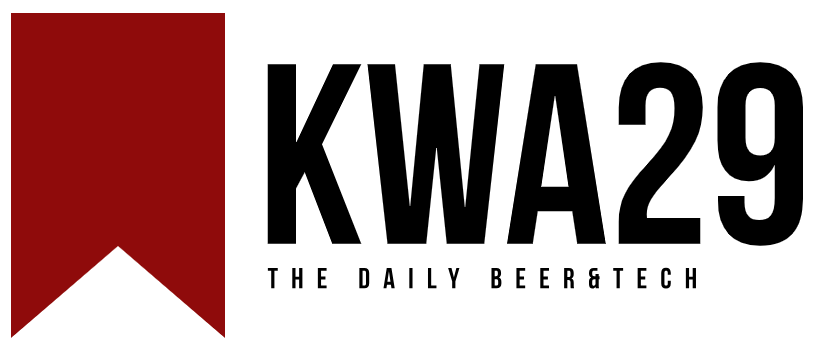Introducing an Engineering Career Ladder at Akeneo
Why we introduce an engineering ladder?
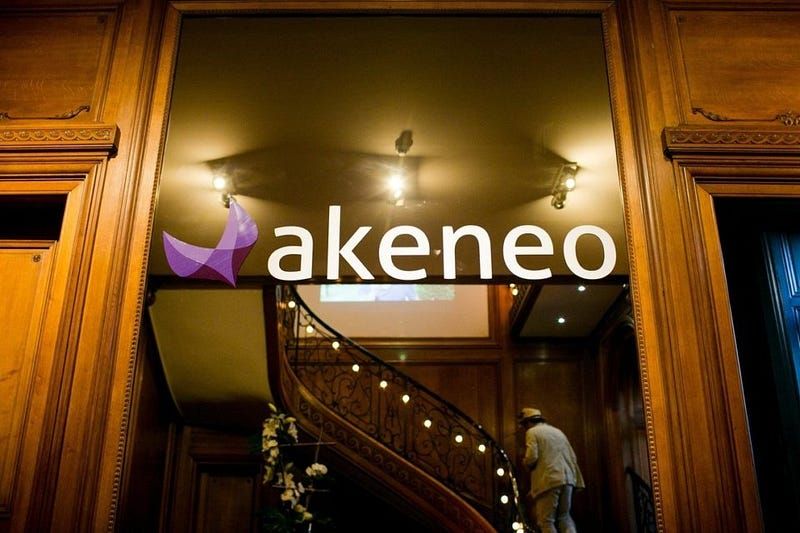
Why we introduce an engineering ladder?
The first discussion around a career ladder came up at the beginning of 2020 with our beloved teammates. We were at a team offsite, the Little Atlantique Brewery at Nantes, to discuss the past year, what was cool and less cool, and what we could improve as a company? The idea was to discuss those topics with each team in an intimate and cozy environment. It allowed me to see the topics that would come up often and establish a list of the “most important topics.” The career ladder was one of the topics that came up.

We have several times the question of how to progress in the expertise field, the role of a team leader, how to be promoted, etc. Sometimes roles are not well defined — what is expected of a team leader? What does “manager” mean in our company? Sometimes the skills required for a role or level were not very clear to them or misunderstood, the different paths of progression were not apparent. Management was the only way to evolve, and individual employees could not continue to develop in a technical expert position. So it became clear that an engineering ladder was needed to make career progression much clearer, to make the promotion process transparent, and to be able to guide engineers at all levels on what areas they should focus on to develop their skills. It’s also a great way to retain engineers because they see clearly how they can progress in the company over the long term.
Face the problem
In the early days, when we were just 10–30 engineers, we don’t need to worry about a career ladder. Thriving engineering culture is more important at this stage rather than a career ladder. Building a career ladder is unnecessary in a company’s early days, mainly due to the engineering team’s size. Building a career ladder is inevitable when teammates start wondering what their career path will look like when the company size requires more structure to function efficiently. At our stage in 2020, we were already 50+ engineers in the Product department, so it was necessary. Our company, our teams, and our product suite are growing, which requires more structure to scale properly. The leadership has to muscle as well on a lot of aspects:
- A single product manager could not serve all the products properly,
- A single engineering manager could not serve all the teams & teammates properly,
- A single CTO can’t lead & provide tech guidance everywhere at scale.
That’s why we crafted a career ladder and introduced new positions. We guess it is a great opportunity for everyone in the department to have a greater impact.
Our previous ladder looked like this, and we faced a few issues with it, which the following questions can express:
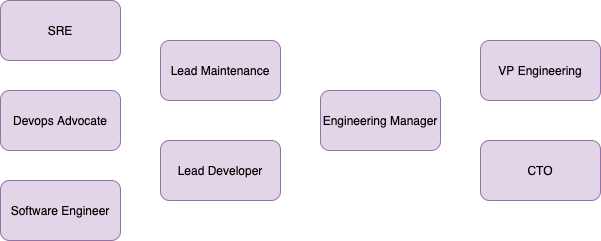
Where did you stand in terms of skills?
What are the expectations?
How to go from one role to the other?
Do we cover all activities?
Only the management path to progress? 🤨
Everyone was able to understand the problem. We first wanted to accommodate the new ladder to our unique culture. We wanted to promote a collaborative culture where we value contributions over credentials. We didn’t want to promote folks every X months, give a predictable standard raise or change the title from Software Engineer II to Software Engineer VII. At last, we don’t believe in the illusion of automatic growth.
Craft a solution
Once we had collected all this feedback, we started working on setting up a career ladder at Akeneo and how to do it. We approached the subject in the following way:
- review and draw inspiration from previous experiences in setting up a career ladder,
- feed by browsing the career ladders available online. You could check out the progression FYI website (https://www.progression.fyi/), which we find inspiring,
- launch the discussion with engineering managers and the first drafts,
- once EMs were comfortable with our first draft version, go and see the lead developers discuss the necessary values,
- once the values were defined, all that remained was to fill the expectations,
- then, we enter the change management exercise with a new presentation of a final version to the LDs and then a comprehensive communication to all teams.
We also wanted to treat everyone equally. Our engineering career ladder is based on the notion that not all should want to be managers but want to have the same impact in the product department. All roles across all tracks match a level of complexity in tasks equal to managerial responsibilities.
Growth in the ladder is directly correlated to the impact measured by completing all soft and hard skills called Core Values at Akeneo for a role. We have also introduced the concept of Tracks to compete with the specificities of one position to another. This career ladder could and should evolve with time, some new positions could be made or introduced over time, and new tracks may appear.
The Tracks
All teammates in engineering are not doing the same work daily. A developer is not an SRE or a manager. We created 3 new tracks to better support those specializations in a role:
- The Products track, which supports product development,
- The Operations track, which supports engineering operations, data & development,
- The Management track to support a team of brilliant engineers.
The Core Values
We organize the skills and behaviors of our engineering career ladder into 5 Core Values. These engineering core values are not the company values (humility, openness, innovation, benevolence & beer), they’re aligned with them while being contextualized to our engineering culture. These Core Values are the same for all tracks in the career ladder and all roles.
We expressed the core values as follow:
- 👪 Collaboration: how we co-design great solutions to tackle business challenges,
- 💭 Product Culture: on this value, we think about the positive impact of our work on our customers, users, and business,
- 🤝 Mentoring: helping any other teammate to grow his/her impact. We want to see them continuously improve themself and the team,
- 🧠 Accountability: hold themself and others accountable,
- 🛠️ Engineering: you demonstrate mastery in your expertise, increasing the scope and value of the solutions we design and deliver.
The role creation
Following the definition of tracks and core values, we took the opportunity to introduce new roles such as Chapter, Principal, and Director position. It seemed important to give the complete path, knowing that some of these new roles would not exist in 2021, such as Principal Engineer. Each role serves the organization on a different scale and is introduced when it becomes necessary. The introduction of new roles is always a tricky change that requires great rigor in formulating expectations and a long time in explaining them. In our case, we made 2 different presentations, introducing the career ladder first and then several weeks later one to explain in detail the new role of the Chapter Engineer or Operations. It was important to explain in detail this new role and how it fits into our current organization.
The final result
This new engineering career ladder took roughly 9 months to be achieved and deployed with several meetings and very constructive discussions. Today, we have a clear and transparent framework that teammates can refer to know the expectations for a given role.
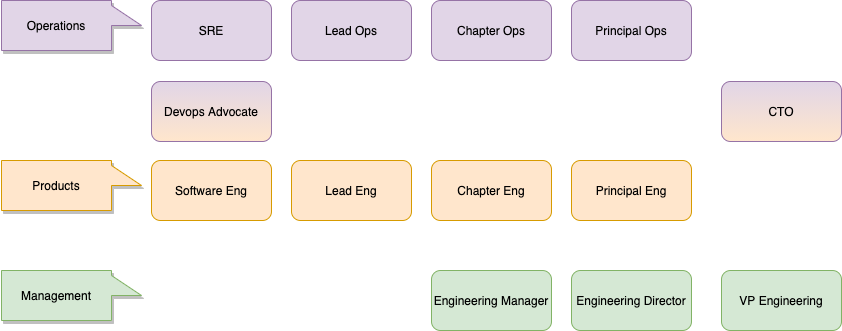
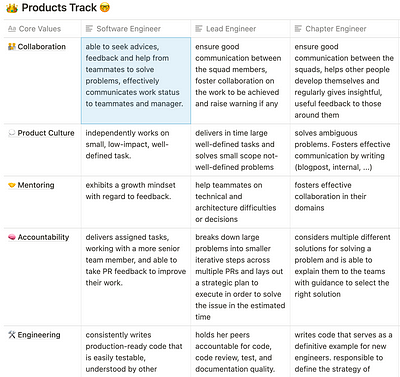
After using our new framework for a few months, we already get a ton of value from it on all the aspects of hiring, on-boarding, and accompanying each teammate into his or her professional growth.
More to come, stay tuned! 📻
